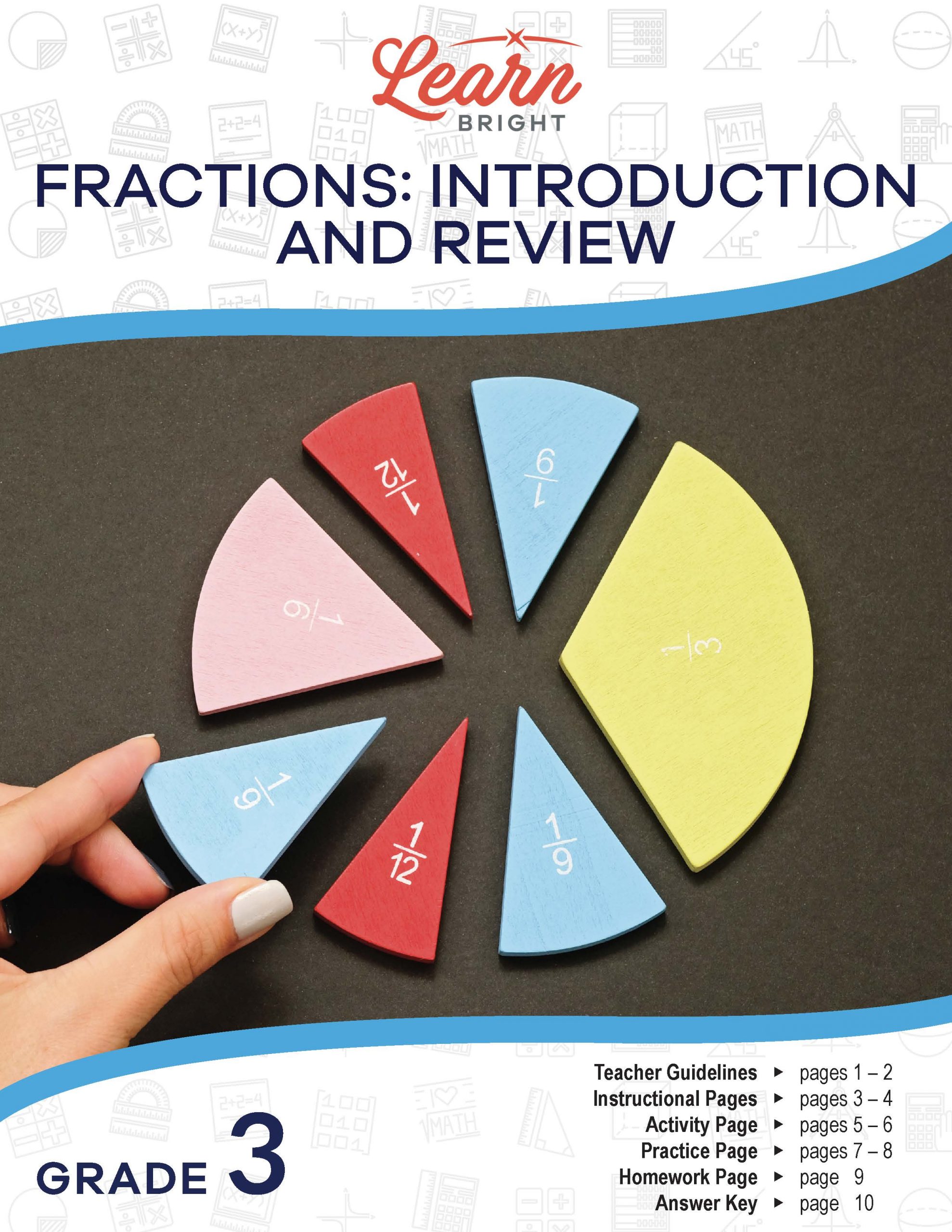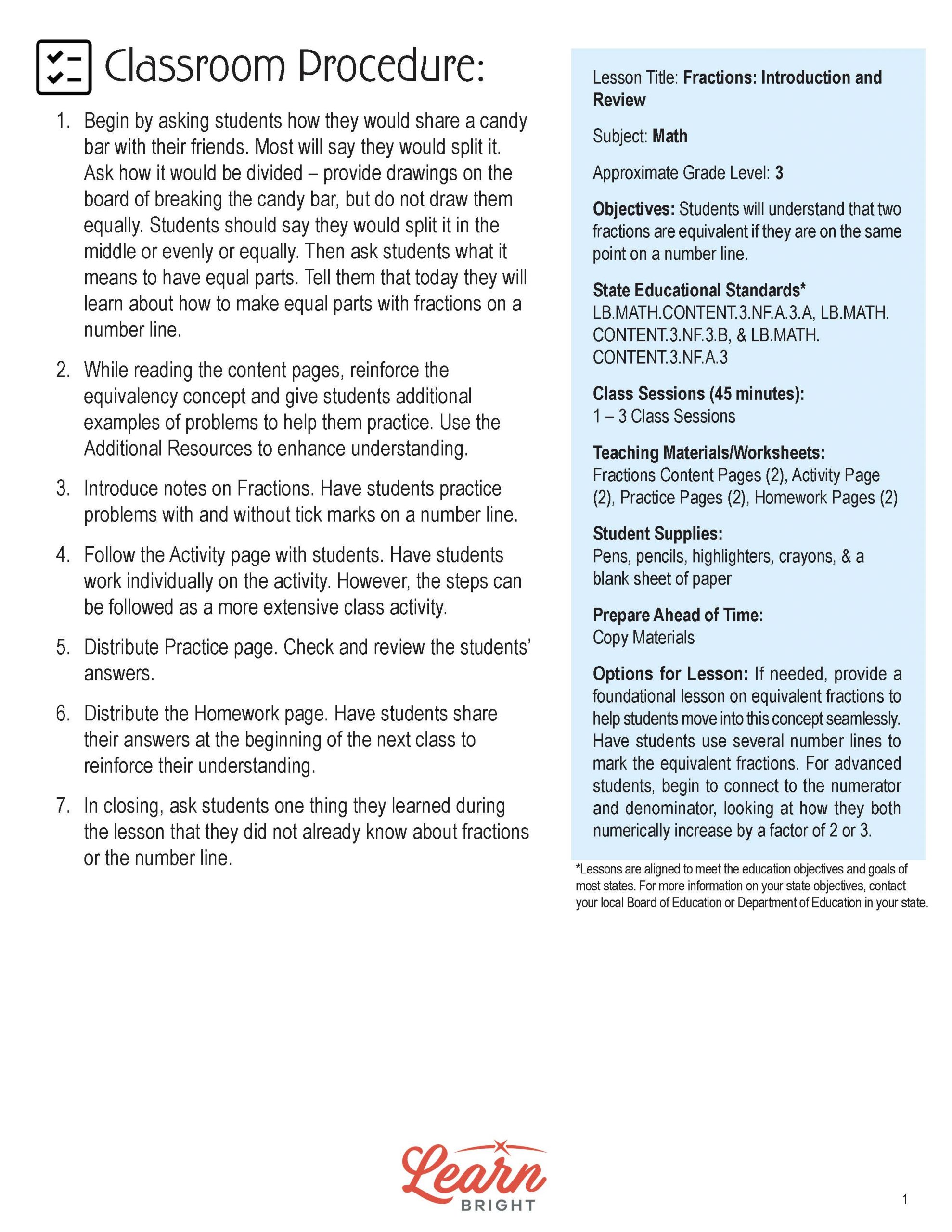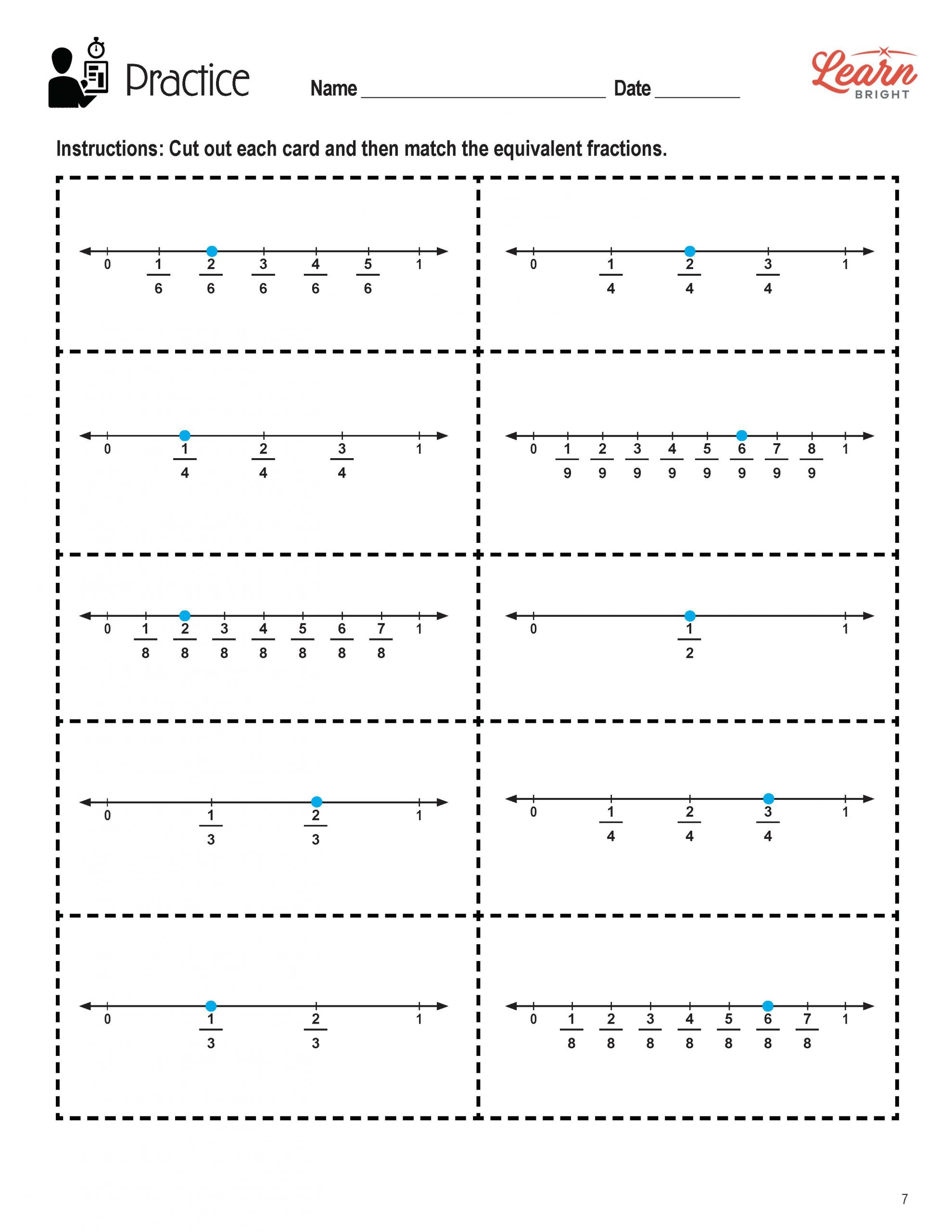Description
What our Fractions: Introduction and Review lesson plan includes
Lesson Objectives and Overview: Fractions: Introduction and Review helps students understand fractions, and how they are related to one another. At the end of the lesson, students will understand that two fractions are equivalent if they are on the same point on a number line. This lesson is for students in 3rd grade.
Classroom Procedure
Every lesson plan provides you with a classroom procedure page that outlines a step-by-step guide to follow. You do not have to follow the guide exactly. The guide helps you organize the lesson and details when to hand out worksheets. It also lists information in the blue box that you might find useful. You will find the lesson objectives, state standards, and number of class sessions the lesson should take to complete in this area. In addition, it describes the supplies you will need as well as what and how you need to prepare beforehand. The supplies that you need for this lesson include pens, pencils, highlighters, crayons, and paper.
Options for Lesson
Included with this lesson is an “Options for Lesson” section that lists a number of suggestions for activities to add to the lesson or substitutions for the ones already in the lesson. One of the optional additions to this lesson it to provide a foundational lesson on equivalent fractions to help students understand the lesson if needed. You can also have students use several number lines to mark equivalent fractions. If you have advanced students, you can begin to teach them about numerators and denominators, looking at how they both numerically increase by a factor of 2 or 3.
Teacher Notes
The teacher notes page includes a paragraph with additional guidelines and things to think about as you begin to plan your lesson. This page also includes lines that you can use to add your own notes as you’re preparing for this lesson.
FRACTIONS: INTRODUCTION AND REVIEW LESSON PLAN CONTENT PAGES
Fractions
The Fractions: Introduction and Review lesson plan includes two pages of content. Equal fractions, also called equivalent fractions, have the same value. The fractions 1/2, 2/4, 3/6, and 4/8 are equivalent. The lesson includes an illustration of each fraction to show that this is true because they all show the same shaded amount.
We can also use number lines to find equivalent fractions. The lesson shows the fractions 1/2 and 2/4 on number lines. They’re equivalent fractions because they have the same amount shaded on both number lines. The lesson then shows a few more examples of equivalent fractions on number lines to reinforce students’ understanding of the lesson material.
FRACTIONS: INTRODUCTION AND REVIEW LESSON PLAN WORKSHEETS
The Fractions: Introduction and Review lesson plan includes three worksheets: an activity worksheet, a practice worksheet, and a homework assignment. You can refer to the guide on the classroom procedure page to determine when to hand out each worksheet.
EQUIVALENT FRACTIONS ACTIVITY WORKSHEET
For the activity worksheet, students will follow the instructions on the worksheet to make equivalent fractions. This includes folding paper into different sections to illustrate how different fractions are equivalent.
MATCHING PRACTICE WORKSHEET
The practice worksheet asks students to cut our cards showing number lines that have fractions on them. They will then match the cards that show equivalent fractions.
FRACTIONS: INTRODUCTION AND REVIEW HOMEWORK ASSIGNMENT
For the homework assignment, students will read and solve a short answer problem about equivalent fractions, drawing a picture or number line to support their answer.
Worksheet Answer Keys
This lesson plan includes answer keys for the activity worksheet, the practice worksheet, and the homework assignment. If you choose to administer the lesson pages to your students via PDF, you will need to save a new file that omits these pages. Otherwise, you can simply print out the applicable pages and keep these as reference for yourself when grading assignments.









